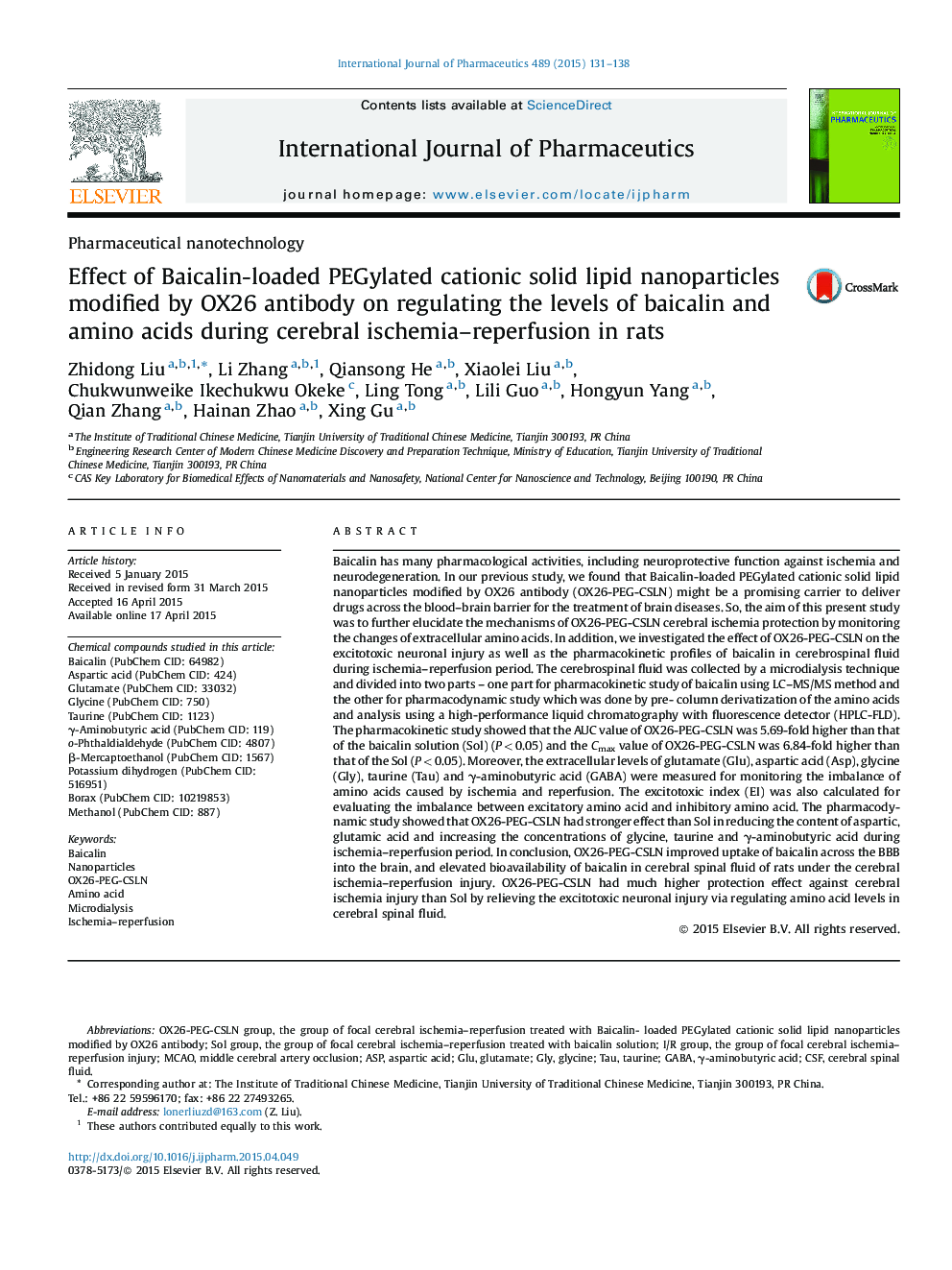| کد مقاله | کد نشریه | سال انتشار | مقاله انگلیسی | نسخه تمام متن |
|---|---|---|---|---|
| 2501397 | 1557335 | 2015 | 8 صفحه PDF | دانلود رایگان |

Baicalin has many pharmacological activities, including neuroprotective function against ischemia and neurodegeneration. In our previous study, we found that Baicalin-loaded PEGylated cationic solid lipid nanoparticles modified by OX26 antibody (OX26-PEG-CSLN) might be a promising carrier to deliver drugs across the blood–brain barrier for the treatment of brain diseases. So, the aim of this present study was to further elucidate the mechanisms of OX26-PEG-CSLN cerebral ischemia protection by monitoring the changes of extracellular amino acids. In addition, we investigated the effect of OX26-PEG-CSLN on the excitotoxic neuronal injury as well as the pharmacokinetic profiles of baicalin in cerebrospinal fluid during ischemia–reperfusion period. The cerebrospinal fluid was collected by a microdialysis technique and divided into two parts – one part for pharmacokinetic study of baicalin using LC–MS/MS method and the other for pharmacodynamic study which was done by pre- column derivatization of the amino acids and analysis using a high-performance liquid chromatography with fluorescence detector (HPLC-FLD). The pharmacokinetic study showed that the AUC value of OX26-PEG-CSLN was 5.69-fold higher than that of the baicalin solution (Sol) (P < 0.05) and the Cmax value of OX26-PEG-CSLN was 6.84-fold higher than that of the Sol (P < 0.05). Moreover, the extracellular levels of glutamate (Glu), aspartic acid (Asp), glycine (Gly), taurine (Tau) and γ-aminobutyric acid (GABA) were measured for monitoring the imbalance of amino acids caused by ischemia and reperfusion. The excitotoxic index (EI) was also calculated for evaluating the imbalance between excitatory amino acid and inhibitory amino acid. The pharmacodynamic study showed that OX26-PEG-CSLN had stronger effect than Sol in reducing the content of aspartic, glutamic acid and increasing the concentrations of glycine, taurine and γ-aminobutyric acid during ischemia–reperfusion period. In conclusion, OX26-PEG-CSLN improved uptake of baicalin across the BBB into the brain, and elevated bioavailability of baicalin in cerebral spinal fluid of rats under the cerebral ischemia–reperfusion injury. OX26-PEG-CSLN had much higher protection effect against cerebral ischemia injury than Sol by relieving the excitotoxic neuronal injury via regulating amino acid levels in cerebral spinal fluid.
Figure optionsDownload high-quality image (169 K)Download as PowerPoint slide
Journal: International Journal of Pharmaceutics - Volume 489, Issues 1–2, 15 July 2015, Pages 131–138